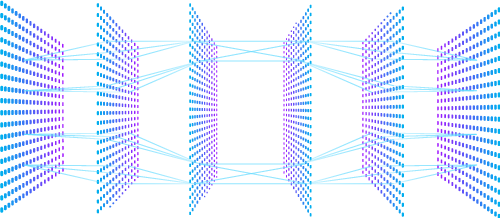
What Is Artifical Intelligence?
What is Artificial Intelligence? Artificial Intelligence (AI) is the simulation of human intelligence processes by machines, particularly computer systems. These processes include learning (the acquisition of information and rules for using the information), reasoning (using the rules to reach approximate or definite conclusions), and self-correction.
The goal of AI is to create machines that can perform tasks that typically require human-level intelligence, such as visual perception, speech recognition, decision-making, and language translation. AI is a rapidly growing field with applications in many areas of life, including healthcare, finance, transportation, and education.

History Of Artifical Intelligence
The history of AI can be traced back to the mid-20th century. In 1956, the term “artificial intelligence” was coined by John McCarthy, who organized the Dartmouth Conference, which is widely regarded as the birthplace of AI. The conference brought together researchers from different disciplines, including mathematics, psychology, and engineering, to discuss the possibility of creating intelligent machines.
In the following years, AI research saw rapid progress, and by the 1960s, scientists were developing programs capable of performing tasks such as theorem proving, language translation, and pattern recognition. However, progress slowed down in the 1970s due to limited computing power and a lack of data.
In the 1980s, the field saw a resurgence of interest with the development of expert systems, which were designed to simulate the decision-making abilities of a human expert in a particular field. The 1990s brought advances in machine learning, which enabled computers to improve their performance on tasks by learning from data.
Since the 2000s, AI has seen a significant expansion with the advent of Big Data and more powerful computing technologies. The field has made tremendous progress in areas such as natural language processing, computer vision, and robotics.

Narrow AI (also known as Weak AI)
Narrow AI refers to AI systems that are designed to perform specific tasks, such as voice recognition, image recognition, or language translation. These systems are not capable of performing tasks outside of their designated area of expertise. Most of the AI systems in use today fall under this category.
General AI (also known as Strong AI)
General AI refers to AI systems that can perform any intellectual task that a human can. These systems would be capable of reasoning, learning, and adapting to new situations in the same way as humans do. General AI is still in the realm of science fiction, as no system has yet been developed that can match human intelligence in all areas.
Superintelligence
Superintelligence refers to AI systems that exceed human intelligence in every area. This type of AI is still hypothetical, and its development is a matter of debate among scientists and philosophers.

Applications of Artificial Intelligence
AI has a wide range of applications across various industries, including healthcare, finance, transportation, education, and entertainment. Here are a few examples:
Healthcare
AI is being used in healthcare to improve diagnostics, develop new drugs, and assist with surgeries. AI-powered chatbots are also being used to provide mental health support to patients.
Finance
AI is being used in finance to automate tasks such as fraud detection, investment analysis, and customer service. AI is also being used to develop algorithmic trading strategies.
Transportation
AI is being used in transportation to improve traffic flow, optimize routes for delivery vehicles, and develop autonomous vehicles.
Education
AI is being used in education to develop personalized learning programs that adapt to the needs of individual students.
Entertainment
AI is being used in entertainment to create personalized recommendations for movies and music, develop new video games, and create more realistic special effects in movies.



